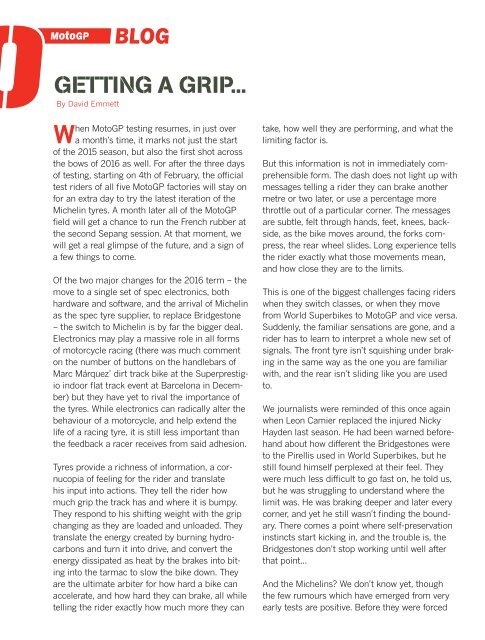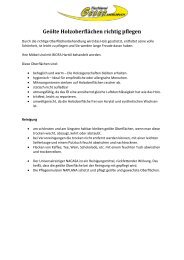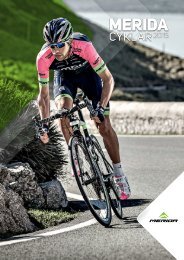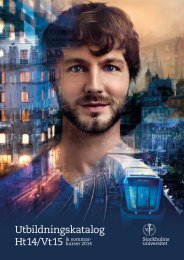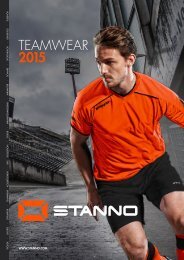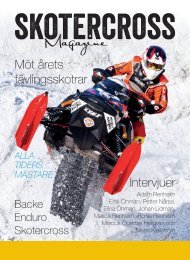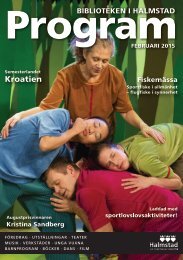ON TRACK OFF ROAD
Ragged edges... British hope Sam Sunderland provided a fine example of how damn difficult the world’s most famous rally can be. The Red Bull KTM man won the first day of the 2015 Dakar but a navigational slip on day two cost more than two hours and a sixtyfive position slip down the leaderboard. Still, almost two weeks and still 8000km to go… Photo by RallyZone/Bauer/Barni
Ragged edges...
British hope Sam Sunderland provided a fine
example of how damn difficult the world’s most famous
rally can be. The Red Bull KTM man won the
first day of the 2015 Dakar but a navigational slip
on day two cost more than two hours and a sixtyfive
position slip down the leaderboard. Still, almost
two weeks and still 8000km to go…
Photo by RallyZone/Bauer/Barni
You also want an ePaper? Increase the reach of your titles
YUMPU automatically turns print PDFs into web optimized ePapers that Google loves.
motogp<br />
BLOG<br />
getting a grip...<br />
By David Emmett<br />
When MotoGP testing resumes, in just over<br />
a month’s time, it marks not just the start<br />
of the 2015 season, but also the first shot across<br />
the bows of 2016 as well. For after the three days<br />
of testing, starting on 4th of February, the official<br />
test riders of all five MotoGP factories will stay on<br />
for an extra day to try the latest iteration of the<br />
Michelin tyres. A month later all of the MotoGP<br />
field will get a chance to run the French rubber at<br />
the second Sepang session. At that moment, we<br />
will get a real glimpse of the future, and a sign of<br />
a few things to come.<br />
Of the two major changes for the 2016 term – the<br />
move to a single set of spec electronics, both<br />
hardware and software, and the arrival of Michelin<br />
as the spec tyre supplier, to replace Bridgestone<br />
– the switch to Michelin is by far the bigger deal.<br />
Electronics may play a massive role in all forms<br />
of motorcycle racing (there was much comment<br />
on the number of buttons on the handlebars of<br />
Marc Márquez’ dirt track bike at the Superprestigio<br />
indoor flat track event at Barcelona in December)<br />
but they have yet to rival the importance of<br />
the tyres. While electronics can radically alter the<br />
behaviour of a motorcycle, and help extend the<br />
life of a racing tyre, it is still less important than<br />
the feedback a racer receives from said adhesion.<br />
Tyres provide a richness of information, a cornucopia<br />
of feeling for the rider and translate<br />
his input into actions. They tell the rider how<br />
much grip the track has and where it is bumpy.<br />
They respond to his shifting weight with the grip<br />
changing as they are loaded and unloaded. They<br />
translate the energy created by burning hydrocarbons<br />
and turn it into drive, and convert the<br />
energy dissipated as heat by the brakes into biting<br />
into the tarmac to slow the bike down. They<br />
are the ultimate arbiter for how hard a bike can<br />
accelerate, and how hard they can brake, all while<br />
telling the rider exactly how much more they can<br />
take, how well they are performing, and what the<br />
limiting factor is.<br />
But this information is not in immediately comprehensible<br />
form. The dash does not light up with<br />
messages telling a rider they can brake another<br />
metre or two later, or use a percentage more<br />
throttle out of a particular corner. The messages<br />
are subtle, felt through hands, feet, knees, backside,<br />
as the bike moves around, the forks compress,<br />
the rear wheel slides. Long experience tells<br />
the rider exactly what those movements mean,<br />
and how close they are to the limits.<br />
This is one of the biggest challenges facing riders<br />
when they switch classes, or when they move<br />
from World Superbikes to MotoGP and vice versa.<br />
Suddenly, the familiar sensations are gone, and a<br />
rider has to learn to interpret a whole new set of<br />
signals. The front tyre isn’t squishing under braking<br />
in the same way as the one you are familiar<br />
with, and the rear isn’t sliding like you are used<br />
to.<br />
We journalists were reminded of this once again<br />
when Leon Camier replaced the injured Nicky<br />
Hayden last season. He had been warned beforehand<br />
about how different the Bridgestones were<br />
to the Pirellis used in World Superbikes, but he<br />
still found himself perplexed at their feel. They<br />
were much less difficult to go fast on, he told us,<br />
but he was struggling to understand where the<br />
limit was. He was braking deeper and later every<br />
corner, and yet he still wasn’t finding the boundary.<br />
There comes a point where self-preservation<br />
instincts start kicking in, and the trouble is, the<br />
Bridgestones don’t stop working until well after<br />
that point...<br />
And the Michelins We don’t know yet, though<br />
the few rumours which have emerged from very<br />
early tests are positive. Before they were forced


